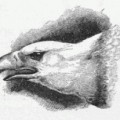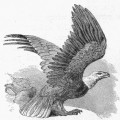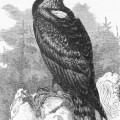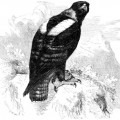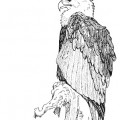The Brazilian Crested Eagle is a predatory bird that was originally found in Brazil. Destruction of much of the forests they tend to live in has led them to become a threatened species and since this bird image was published in 1829, they are generally called crested eagles. Many of the species names of birds and animals from vintage books have been changed as they have been reclassified but this one might sadly have been renamed due to habitat destruction.
The Brazilian Crested Eagle is still found in Central and South America though it does seem their numbers might be dwindling. They prefer lowland forests, mostly tropical rainforests.
Natives often referred to these birds as the Caracara due to their distinctive cry. Their feet are webbed and they spend a goodly amount of time on the ground. Vintage encyclopedias mention that the bare skin on the face of the bird can change color – an event thought to be spurred by emotion. Who knew birds might actually blush?
The Polyborus Braziliensis, as the scientists call this bird, has wingspans of 55 to 70 inches, which are considered fairly short for an eagle of this size. The females, are said to actually be about 14% larger than the males – something I’ve not really seen before among the birds I’ve researched and written about. They are distinctive for their crests and generally light coloring. (Plumage color can vary among the Crested Eagles.)
This eagle drawing and book plate was done by an un-named artist. Based on the age of the book and the fact that this drawing was presented in full-color leads me to suspect that the piece is hand-painted. It was most likely the work of several talented artisans – the original drawing was turned into an engraving which was printed and then hand-painted. It was included in one volume of a multi-volume work by William Swainson and was published in 1829.
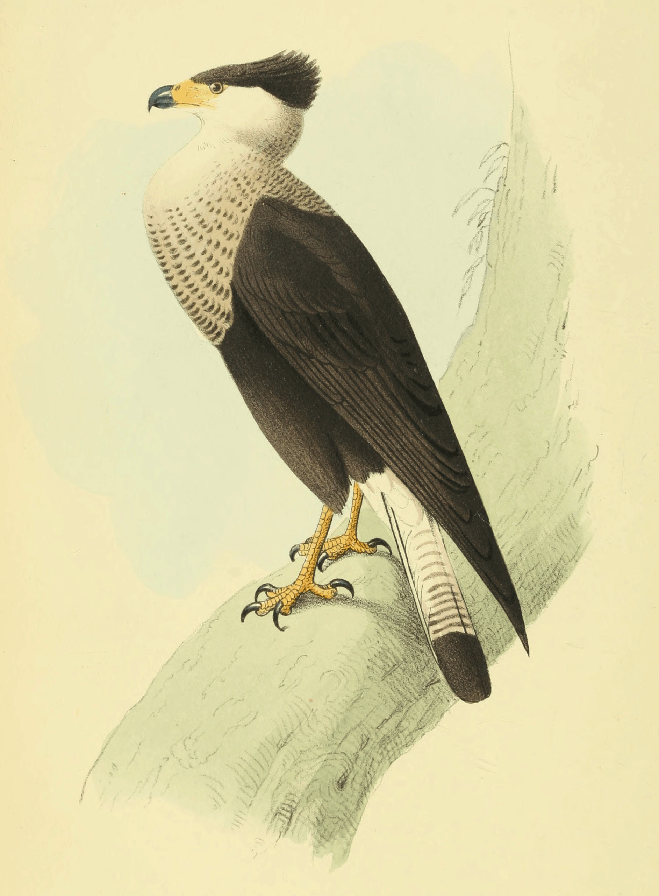
This image is copyright free and in the public domain anywhere that extends copyrights 70 years after death or at least 120 years after publication when the original illustrator is unknown.
